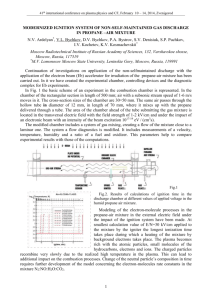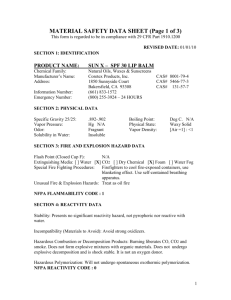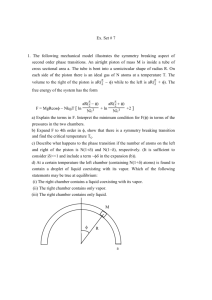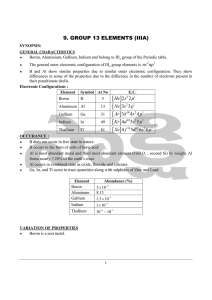c - Royal Society of Chemistry
advertisement
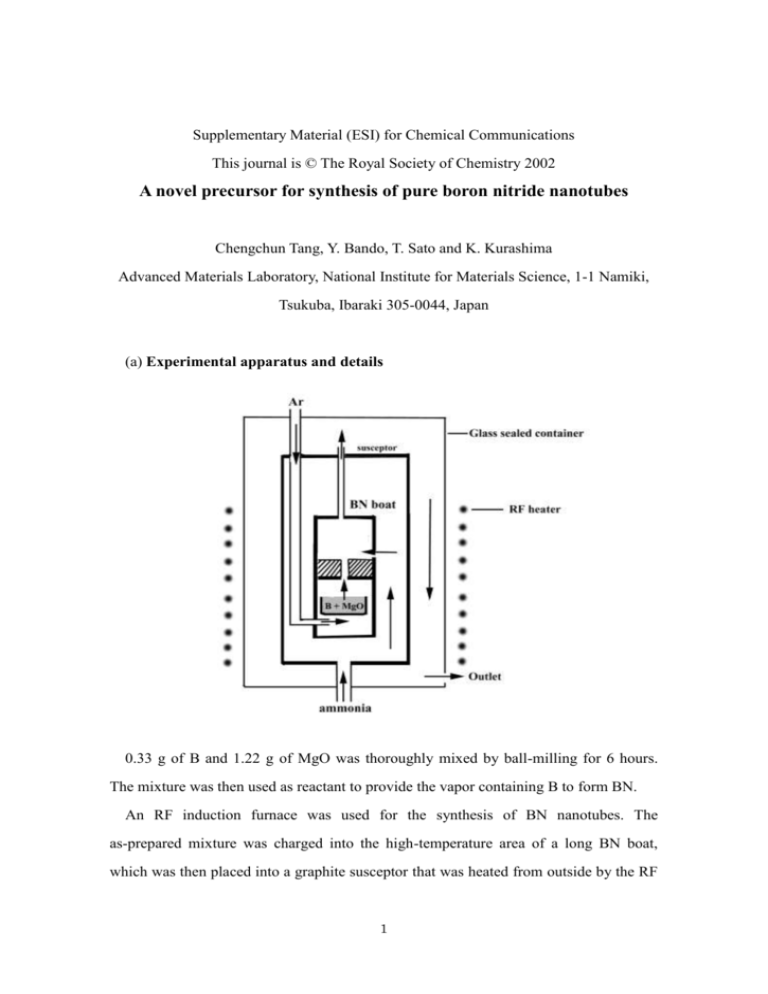
Supplementary Material (ESI) for Chemical Communications This journal is © The Royal Society of Chemistry 2002 A novel precursor for synthesis of pure boron nitride nanotubes Chengchun Tang, Y. Bando, T. Sato and K. Kurashima Advanced Materials Laboratory, National Institute for Materials Science, 1-1 Namiki, Tsukuba, Ibaraki 305-0044, Japan (a) Experimental apparatus and details 0.33 g of B and 1.22 g of MgO was thoroughly mixed by ball-milling for 6 hours. The mixture was then used as reactant to provide the vapor containing B to form BN. An RF induction furnace was used for the synthesis of BN nanotubes. The as-prepared mixture was charged into the high-temperature area of a long BN boat, which was then placed into a graphite susceptor that was heated from outside by the RF 1 furnace. A reaction chamber was separated from the long boat as being the reaction chamber through which ammonia was flowed. The locations of the reactant mixture and reaction chamber were designed to keep chamber temperature at 1100 C when the mixture was heated to 1300 C. The geometry and vapor transport directions are shown in Figure S1. During the reaction process, the reacted system was held in protecting transport argon gas flowing at a rate of 200 sccm, and ammonia was introduced at a rate of 100 sccm when the furnace was heated to 1300 C. After reaction for 2 hours, fluffy-like colorless BN nanotubes could be collected from the reaction chamber. A black deposited powder could also be collected from the outer surface of the graphite-heated susceptor. The products were analyzed by X-ray diffraction with Cu K radiation (XRD, RINT 2000). The overview of the sample morphology was checked by scanning electron microscopy (SEM). Sample powders were also ultrasonically dispersed in acetone and dropped onto a carbon-coated copper grid for the measurement by transmission electron microscopy (TEM, JEM-3000F, JEOL) with the analysis systems of energy-dispersive X-ray analysis (EDX) and electron energy loss spectra (EELS). (b) Figure S2: XRD patterns for the product collected in reaction chamber, where h and r represent hexagonal and rhombohedral BN, respectively. The difference between hexagonal BN with two-layer repeat unit and rhombohedral BN with three-layer repeat unit could be detected for the XRD pattern by the occurrence of the peak locating at 2=42.5. 2 (c) Figure S3: XRD pattern of the sample collected at the surface of graphite-heated susceptor. The result indicates that the product is comprised of MgN2C, BN and MgO. The reflections of MgN2C phase are marked by their indices. BN and MgO point to the reflections from BN crystal and MgO, respectively. (d). Figure S4: Typical electron loss spectrum (EELS) of BN nanotubes. Only B and N K-edge could be observed. 3 (e)Figure S5: Selected-area electron diffraction from individual BN nanotubes, indicating a near Zigzag atomic arrangement. (f). Figure S6: Energy-dispersive X-ray spectrum measured from the tip with the fracture surface, where encapsulated matter was observed. (g) Further experiments The vapor phase species of the mixture of boron and MgO with molar ratio of 1:1 have been investigated experimentally and theoretically. When the temperature is higher than 1300 K (A. W. 4 Searcy, C. E. Myers, J. Phys. Chem. J. Phys. Chem. 1957, 61,957), the involving chemical reaction is 2B (s) + 2MgO (s) -> B2O2 (g) + Mg (g) . The boron monoxide gas molecule is sufficiently stable to be formed at the experimental temperature we used. When an exact molar ratio of 1:1 was used, our experiments indicate that the mixture was evaporated fully. However, when we increased the MgO concentration in the mixture, a remnant gray powder was found exist the heating area of 1300 ºC, which is Mg3(BO3)2, indicating that the magnesium borate has a lower vapor pressure relative to boron monoxide. Although we could not exclude the existence of vapor Mg(BO2)2 when 1:1 molar ratio was used, we believe that boron monoxide is the dominant vapor species. We also attempted to evaporate pure B2O3 at high temperature and put some transition metal catalysts at the low temperature area, but perhaps due to the high vapor pressure of B2O3 or the formation of vitreous B2O3, no BN could be found at the catalyst area. Only black glassy B2O3 attached closely to the BN boat wall. Because BN crystallization needs a high temperature (usually at 1100ºC), it is difficult to coordinate the BN crystallization temperature, the catalytic activity of transition metal, and the evaporation of boron oxide. We noticed the work on the BN sphere synthesized by AAVS method involving the reaction of boric acid with ammonia, (E. J. Pruss, G. L. Wood, W. J. Kroenke, R. T. Paine, Chem, Mater. 2000, 12, 19), in comparison to our experiments, the changing of crystalline structure of boron oxide should be key to forming BN crystal. 5

